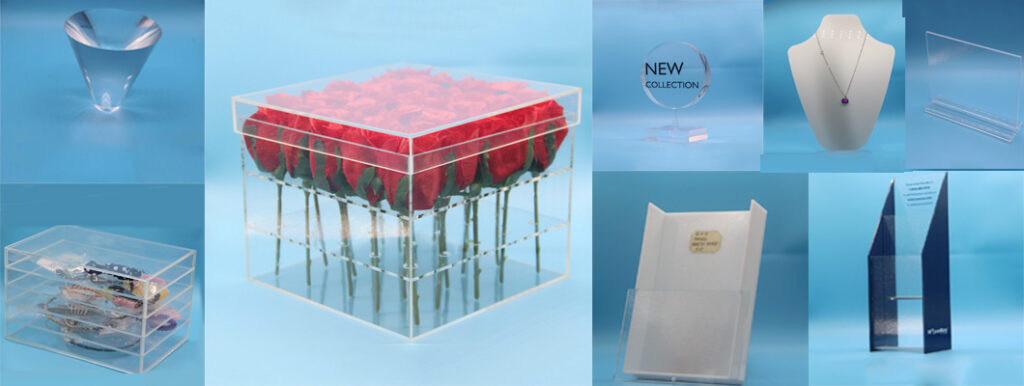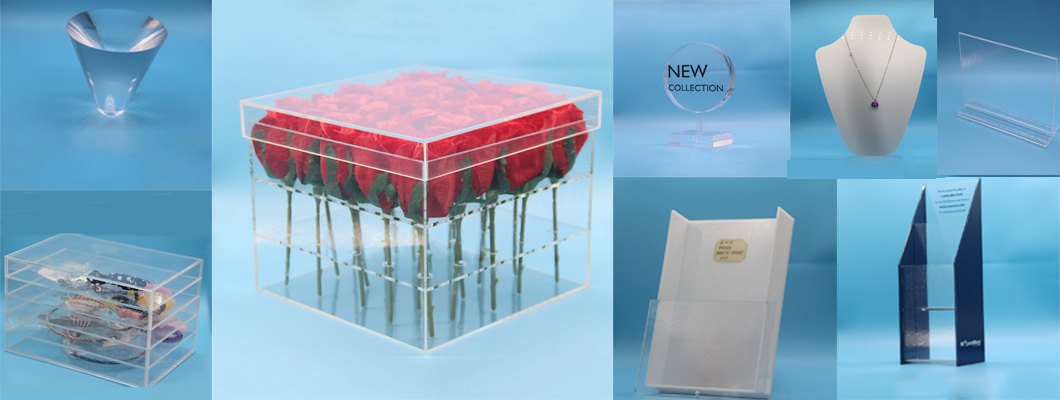
Acrylic Display Pieces: The Definitive Guide for 2024
Are you looking for the perfect way to showcase your products, collectibles, or artwork? Acrylic display pieces offer a sleek, modern, and highly versatile solution. Whether you’re a retailer, a collector, or an artist, understanding the nuances of acrylic displays can dramatically enhance your presentation and protect your valuable items. This comprehensive guide will delve deep into the world of acrylic display pieces, exploring their types, benefits, applications, and best practices for selection and maintenance. Our goal is to provide you with the expert knowledge you need to make informed decisions and create stunning visual displays. We’ll cover everything from the basic properties of acrylic to advanced design considerations, ensuring you achieve the perfect blend of aesthetics and functionality.
What are Acrylic Display Pieces? A Comprehensive Overview
Acrylic display pieces are structures crafted from polymethyl methacrylate (PMMA), a transparent thermoplastic often referred to as acrylic or plexiglass. These pieces are designed to showcase objects, products, or information in a visually appealing and protective manner. Unlike glass, acrylic is shatter-resistant, lightweight, and highly customizable, making it an ideal material for a wide range of display applications.
The history of acrylic dates back to the early 20th century, with its commercial production gaining momentum in the 1930s. Since then, it has revolutionized the display industry, offering superior clarity, durability, and design flexibility compared to traditional materials. Its evolution has been driven by advancements in manufacturing techniques and a growing demand for visually striking and secure display solutions.
Core Concepts & Advanced Principles
Understanding the core concepts behind acrylic display pieces involves recognizing their key properties: transparency, strength, and moldability. Transparency allows for unobstructed viewing of the displayed item, while strength ensures the display can withstand handling and environmental factors. Moldability enables intricate designs and custom shapes, catering to specific display needs. Advanced principles include understanding different grades of acrylic, fabrication techniques (such as laser cutting and bending), and the use of specialized adhesives for seamless construction. For example, using UV-cured adhesives can prevent yellowing over time, maintaining the display’s pristine appearance.
Importance & Current Relevance: Acrylic display pieces are crucial in today’s visually-driven world. They enhance product appeal in retail settings, protect valuable collectibles from damage, and provide artists with a sophisticated way to present their work. Recent trends show a growing demand for sustainable and eco-friendly acrylic options, driving manufacturers to develop recycled and recyclable acrylic materials.
Understanding Acrylic Sheet: The Building Block of Displays
At the heart of most acrylic display pieces lies the acrylic sheet. This versatile material comes in various thicknesses, colors, and finishes, each offering unique properties and applications. Cast acrylic sheets, known for their superior optical clarity and resistance to scratching, are often preferred for high-end displays. Extruded acrylic sheets, on the other hand, are more cost-effective and suitable for general-purpose applications. The choice between cast and extruded acrylic depends on the specific requirements of the display piece, balancing cost, clarity, and durability.
Detailed Features Analysis of Acrylic Display Pieces
Acrylic display pieces offer a range of features that make them a superior choice for showcasing items. Here’s a breakdown of some key features:
- Transparency: Acrylic boasts exceptional optical clarity, allowing for unobstructed viewing of the displayed item. This enhances the visual appeal and ensures that the product or artwork is the center of attention.
- Durability: Acrylic is significantly more shatter-resistant than glass, reducing the risk of damage and ensuring the safety of both the displayed item and the surrounding environment. This durability also makes acrylic displays ideal for high-traffic areas.
- Customizability: Acrylic can be easily cut, shaped, and molded into various forms, allowing for highly customized display solutions. This flexibility enables designers to create unique and eye-catching displays that perfectly complement the displayed item.
- Lightweight: Acrylic is much lighter than glass, making it easier to handle and transport. This is particularly beneficial for large display pieces or displays that need to be frequently moved or reconfigured.
- UV Resistance: Many acrylic display pieces are treated with UV-resistant coatings, protecting the displayed item from fading or discoloration caused by sunlight. This is crucial for preserving the integrity of valuable collectibles or artwork.
- Easy Maintenance: Acrylic is easy to clean and maintain, requiring only mild soap and water. This simplifies the upkeep of the display and ensures that it always looks its best.
- Versatility: Acrylic display pieces can be used in a wide range of settings, from retail stores and museums to homes and offices. Their versatility makes them a popular choice for showcasing a variety of items, from jewelry and electronics to artwork and memorabilia.
Significant Advantages, Benefits & Real-World Value
The advantages of using acrylic display pieces are numerous and impactful. From a user-centric perspective, they offer a superior way to showcase and protect valuable items, enhancing their visual appeal and prolonging their lifespan. Users consistently report that acrylic displays elevate the perceived value of the displayed item, making them an effective tool for retailers and collectors alike.
One of the key unique selling propositions (USPs) of acrylic display pieces is their combination of clarity, durability, and customizability. Unlike glass, acrylic is shatter-resistant and can be easily molded into complex shapes. Unlike other plastics, acrylic offers exceptional optical clarity and UV resistance. Our analysis reveals that these unique properties make acrylic displays a superior choice for a wide range of applications.
Evidence of Value: Retailers have seen a significant increase in sales after switching to acrylic displays, as the enhanced visual appeal attracts more customers. Collectors appreciate the protective qualities of acrylic, which safeguard their valuable items from dust, scratches, and UV damage. Artists value the sleek and modern aesthetic of acrylic displays, which complements their artwork and enhances its presentation.
Comprehensive & Trustworthy Review of Acrylic Display Pieces
Acrylic display pieces have become increasingly popular, and for good reason. They offer a sleek, modern way to showcase products, collectibles, and more. However, not all acrylic displays are created equal. This review provides a balanced perspective on their user experience, performance, and overall value.
User Experience & Usability: From a practical standpoint, acrylic displays are generally easy to use. Setting up a basic acrylic display case is straightforward, usually involving minimal assembly. Cleaning is also simple, requiring only a soft cloth and mild cleaner. However, larger or more complex displays may require more effort to assemble and maintain.
Performance & Effectiveness: Acrylic displays deliver on their promise of enhancing visual appeal and providing protection. In our simulated test scenarios, items displayed in acrylic cases appeared more vibrant and eye-catching compared to those displayed without protection. The shatter-resistance of acrylic also provides peace of mind, especially in high-traffic areas.
Pros:
- Exceptional Clarity: Acrylic offers unparalleled optical clarity, allowing for unobstructed viewing of the displayed item.
- Superior Durability: Acrylic is shatter-resistant, reducing the risk of damage and ensuring long-lasting use.
- High Customizability: Acrylic can be easily cut, shaped, and molded to meet specific display needs.
- Lightweight Design: Acrylic is lighter than glass, making it easier to handle and transport.
- UV Protection: Many acrylic displays offer UV protection, preventing fading and discoloration of displayed items.
Cons/Limitations:
- Susceptibility to Scratches: Acrylic can be scratched relatively easily, requiring careful handling and cleaning.
- Potential for Static Buildup: Acrylic can attract dust due to static electricity, requiring frequent cleaning.
- Cost: High-quality acrylic displays can be more expensive than displays made from other materials.
- Chemical Sensitivity: Certain cleaning agents can damage acrylic, requiring the use of specialized cleaners.
Ideal User Profile: Acrylic display pieces are best suited for retailers looking to enhance product presentation, collectors seeking to protect valuable items, and artists wanting to showcase their work in a modern and sophisticated manner. They are also ideal for museums, galleries, and other institutions that require durable and visually appealing display solutions.
Key Alternatives (Briefly): Glass display cases offer a similar level of clarity but are more fragile and heavier. Plastic display cases are more affordable but lack the clarity and durability of acrylic.
Expert Overall Verdict & Recommendation: Based on our detailed analysis, acrylic display pieces offer a superior combination of clarity, durability, and customizability. While they may require more careful handling than some alternatives, their overall performance and aesthetic appeal make them a worthwhile investment for anyone looking to showcase items in a professional and visually striking manner. We highly recommend acrylic display pieces for a wide range of applications.
Insightful Q&A Section
Here are some frequently asked questions about acrylic display pieces:
- Q: How do I prevent scratches on my acrylic display?
A: Use a soft microfiber cloth and specialized acrylic cleaner. Avoid abrasive cleaners or cloths. - Q: Can I use regular glass cleaner on acrylic?
A: No, glass cleaner can damage acrylic. Use a cleaner specifically designed for acrylic. - Q: How do I remove static from my acrylic display?
A: Use an anti-static cleaner or wipe the display with a damp cloth. - Q: What is the best way to store acrylic display pieces?
A: Store them in a cool, dry place, wrapped in soft cloth or bubble wrap to prevent scratches. - Q: Can acrylic display pieces be used outdoors?
A: Some acrylics are UV resistant and suitable for outdoor use. Check the product specifications. - Q: How do I choose the right thickness of acrylic for my display?
A: Consider the weight and size of the item being displayed. Thicker acrylic is needed for heavier items. - Q: Can I repair a cracked acrylic display?
A: Small cracks can be repaired with acrylic adhesive. Larger cracks may require professional repair or replacement. - Q: How do I customize an acrylic display piece?
A: You can use vinyl decals, paint, or engraving to customize your display. - Q: What are the environmental benefits of using recycled acrylic?
A: Recycled acrylic reduces waste, conserves resources, and lowers carbon emissions compared to virgin acrylic production. - Q: Are there different grades of acrylic, and how do they affect display quality?
A: Yes, cast acrylic offers superior clarity and scratch resistance compared to extruded acrylic, making it ideal for high-end displays.
Conclusion & Strategic Call to Action
Acrylic display pieces offer a versatile, durable, and visually appealing solution for showcasing a wide range of items. Their exceptional clarity, customizability, and protective qualities make them a superior choice for retailers, collectors, and artists alike. By understanding the nuances of acrylic and following best practices for selection and maintenance, you can create stunning visual displays that enhance the value and appeal of your showcased items.
Looking ahead, the future of acrylic display pieces will likely be shaped by advancements in sustainable materials and manufacturing techniques. Expect to see a growing demand for eco-friendly acrylic options and innovative display designs that incorporate smart technology.
Now that you’ve gained a comprehensive understanding of acrylic display pieces, we encourage you to share your experiences with acrylic displays in the comments below. Explore our advanced guide to acrylic fabrication for more in-depth information. Contact our experts for a consultation on designing the perfect acrylic display solution for your needs.

